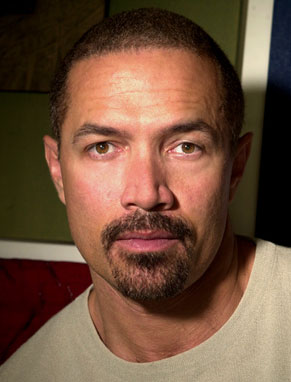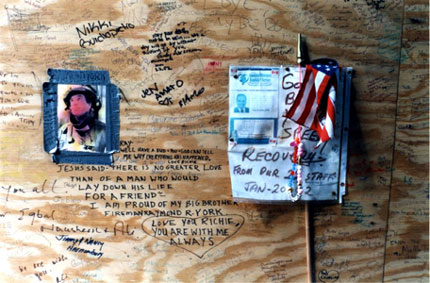Turning 70 is a big deal for most people, and especially so for Philip Glass, whose birthday is being celebrated worldwide big time. He’s just been feted in New York by Music At The Anthology (MATA), and Groningen, Holland, is putting on a Glass Festival. The composer and The Philip Glass Ensemble performed his massive compendium of minimalist moves, Music in 12 Parts (1971-74), this summer in the Hague and the San Francisco Bay Area pays its homage with the world premiere of his SF Opera commission, Appomattox, this coming Friday, October 5.
Glass is such a big name, and pervasive influence–I caught a chord progression in a dance mix lifted straight from him in a bar–that it’s almost hard to see the trees for the forest. But Glass emerged clearly from that penumbral place in Philip Glass: An Evening of Chamber Music, which kicked off San Francisco Performances’ season at Herbst Theatre on Friday night. And all the frenzied Zeitgeist schtick on Van Ness– couples out on first — will there be a second?– dates, bobbing heads on cell phones, opera patrons running to catch the curtain, and monster traffic–was happily left outside.
Glass, mike in hand, (“is it me, or the machine?) began by announcing a program change. He’d begin with 4 sections of the 5-part Metamorphosis (1988), for solo piano, and not play either of the 2 Etudes (1994) planned. Metamorphosis, though it uses material from the composer’s score to Errol Morris’ doc The Thin Blue Line (1988), takes its title from the Kafka short story of the same name, for which Glass wrote scores for concurrent theater productions in Brazil and the Netherlands. And though the music stands proudly on its own, its lines and harmonies suggest the haunted atmosphere of Kafka’s tale–Gregor Samsa’s alienation from the world, and his dogged journey to a kind of transcendence.
And Glass, sitting erect at his Steinway concert grand Model D, brought its many beauties to light–the poignant hesitations in #1 struck the heart, he made the massive floating harmonies in #2 acutely affecting through discreet pedalling, his attacks gave the bell-like paralllel chords of #3 power, and his command of color gave #4 its dramatic weight. Glass has spoken of his drifting sense of meter, and this was certainly apparent throughout; pianists like Alec Karis and Michael Riesman would surely have been metronomically regular. Metamorphosis has sometimes been described as Satie-like, though the equally private worlds of Schubert’s Impromptus and Brahms’ Intermezzi, come strongly to mind. My first encounter with Metamorphosis live was when Glass played the entire set ,as Molissa Fenley danced, at The Unitarian Church, which is a little more than a stone’s throw from Herbst. But what sticks most is how the music the composer has written in the intervening years has colored his gestures when he plays this piece now.
Next came the West Coast premiere of Songs and Poems for Cello, which Glass wrote for NY-based new music star Wendy Sutter of Bang On A Can fame, who plays a wide range of works from uptown –actually West Village people like Elliott Carter–to downtown composers. This is a thoroughly demanding piece, which Sutter played from memory, and which, with its sense of duende–Lorca”s term for anything springing from deep within– seemed to evoke music as various as Bach, bits of the Suites for Cello (BWV 1007-12), and Brandenburg 6 (1721), as well as Ravel’s Sonata for Violin and Cello (1920-22), and Dohnanyi’s Cello Sonata (1899), which Martha Graham choreographed as Lamentation, without ever resembling any of these. Its seven sections–applause broke out in one–were mostly grave, intense, deeply sonorous, and completely lacking in easy effects. Sutter negotiated its myriad technical–long sustained lines, double-stopping, pizzicati, and focus on different registers, usually sequentially–and expressive difficulties with almost superhuman ease.
Four interconnecting episodes, or “Tissues”, from Godfrey Reggio’s third and final installment in the QATSI trilogy, Naqoyqatsi (2002), scored here for Glass, piano, Sutter, cello, and PGE percussionist Mick Rossi, followed. One was struck by the cello writing’s resemblance to that in Songs and Poems for Cello, the ultra soft sounds from the keyboard, and the floating sounds Rossi achieved on marimba and celeste. Naqoyqatsi never got the attention it deserved in its initial theatrical release, though Glass’ tour with his ensemble here last year–the film and score were performed by him and his PGE live at Davies–helped to right that wrong.
Equally atmospheric were the last two offerings–The Orchard, a kind of slow sarabande from Glass’ score for JoAnne Akalitis’ 1991 theatre production of Genet’s The Screens, transcribed here for piano, cello, and percussion, from its original incarnation for flute, clarinet, piano, percussion and cello, and Closing, from Glass’ 1981 record debut on CBS, Glassworks, misunderstood as a pop/crossover piece then, and probably now as well, which Glass and his two fellow musicians played with both point and affection. “How can such a quiet person write such powerful music?” I said to my companion, who sat stock still, hands folded, throughout. Who knows? But this concert proved beyond the slightest doubt that Glass has always been and remains a chamber musician intent on speaking to his listeners in the most intimate terms. Appomattox, which struck this listener as almost unbearably intimate, when he heard most of its first act at a Sitz-Probe 2 September, will likely fall into this exalted class
 Philip Glass is not the only composer who turned 70 this year. Among other newly-minted septuagenarians is David Del Tredici, a “maverick” composer in the great American tradition, and while his attainment of elder statesman status has attracted much less fuss than Glass and Steve Reich, there have been some small, quiet celebrations, one of which was reviewed in the NYT this morning by Alan Kozinn.
Philip Glass is not the only composer who turned 70 this year. Among other newly-minted septuagenarians is David Del Tredici, a “maverick” composer in the great American tradition, and while his attainment of elder statesman status has attracted much less fuss than Glass and Steve Reich, there have been some small, quiet celebrations, one of which was reviewed in the NYT this morning by Alan Kozinn. Alas, no composers among the
Alas, no composers among the  “Music should either touch your soul or make you dance,” Michael Abels says, and though he admits there is a lot of music out there that doesn’t do either, those should be the goals. “I always ask my students ‘what is the purpose of your music?’ You can’t create it unless you know what you want it to do.”
“Music should either touch your soul or make you dance,” Michael Abels says, and though he admits there is a lot of music out there that doesn’t do either, those should be the goals. “I always ask my students ‘what is the purpose of your music?’ You can’t create it unless you know what you want it to do.”
 Review in yesterday’s NYT of a novel called
Review in yesterday’s NYT of a novel called 